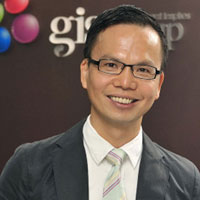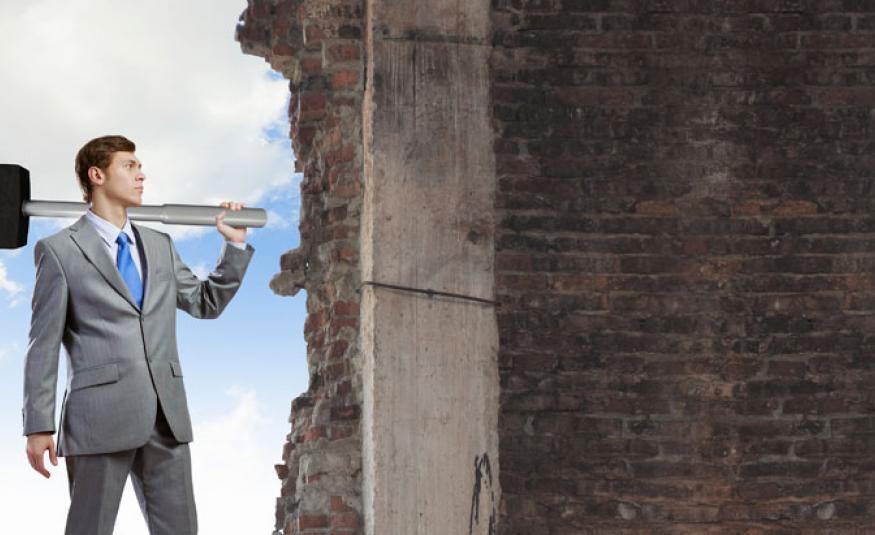I'm not sure more exhibitions as we know them today and as exist in most industry sectors, will really exist in the future,” MD of global exhibition association UFI Paul Woodward told the gathered crowd at the AIPC Congress in Boston in July. “I’m not sure that some of the clean delineations that we have between some of the different sector of the events industry will really be so clear in the future.”
It’s a viewpoint that to my ear, sat in the crowd at the John B Hynes Veterans Memorial Convention Centre, drew sighs of concern and relief in equal measure. Because the reason for the blending of the two disciplines, hitherto considered separate, is not a result of identification for purposes of marketing or promotion but necessity, as the output of the global live events sector grows ever more complex.
“The distinctions between [exhibitions, congresses and conventions] are increasingly blurred,” continued Woodward, “because the events we are going to be doing in the future are much more complex and I think, much more challenging, requiring an entirely different set of people.”
And while the sighs of concern are easily understandable – imposed industry change requires adaptation and reconfiguration after all – the sighs of relief from an audience comprising largely venue owners and managers was one of acceptance more than joy. Everyone, it seems, is pleased to know they are not the only one who sees the wind changing.
The way in which we produce events that fill venues is moving ever further from the straightforward acquisition of square metres over time, evolving into the submission of RFPs inviting the creation of inspirational, experiential, events that combine elements of many kinds of live events; exhibitors sells to visitors, but organisers must now often entertain visitors as an audience, providing entertainment, performance, interaction, workshops and even, as is the case of exhibitions such as Messe Frankfurt’s Automechanika, industry accreditation for willing participants.
Taiwan’s GIS Group was founded in 1991 as a professional conference organiser and destination management company, as well as providing audio-visual solutions for meetings, being one of the largest interpreting agencies in Taiwan, and managing convention venues in Taiwan. Today it has four and plans to open a new one in Kaoshiung in the near future.

Jason Yeh, the company’s CEO, may have his fingers in many pies, but considers himself first and foremost a PCO. He says the convergence between exhibitions and meetings is clear to understand.
“If you ask people why they come to a conference or a meeting, people will probably say they come for networking. They want to build the relationship with people,” he explains.
“They will probably say they want to know something, some new innovation in the industry, the advance of the industry, they want to have more knowledge sharing.
“When you ask most people why they come to exhibitions, many of them say they are coming to buy or sell, and some want to know new products and services. You care more about how many booths and space you sell for the show. Your energy focus is on marketing and sales.”
Yeh points out that professional conference organiser doesn’t typically own the brand of an event – the brand belongs to its clients – and compared with the exhibition industry, conference organisers have less investment up front when organising an event.
“Of course exhibition organisers do own their brand and titles, and you have a big initial investment,” he says. “As a PCO I always think the convention industry is like a dolphin: small in size and always moving, because the conventions and meetings rotate in different cities. So the competition in our industry is fine.
“But PEOs – Professional Exhibition Organisers – are more like a whale, large in size, the competition in our industry is more fierce.”
Yeh says PEOs create a marketplace. “If you close your eyes and think about an exhibition, you probably have this scenario in mind. All the sellers waiting in their booths, all the buyers waiting outside the door. Then the door opens and the buyers flow in like sardines, moving in different directions, to different appointments at the same time. When the buyer visits the booths of the sailor, the seller wants to bite them at first sight.”
For the PCO, he claims, staging an event is is more like creating a theatrical performance. “Close you eyes again and think about meetings,” he urges. “The door is open and people find their meeting space. The audience is waiting for something to happen on the stage, and so the speaker starts to talk. The speaker wants to entertain the audience as much as they can, like an actor. We seem to be quite different.
Not so different, you and I
“However in fact we have many things in common. If we look at our business from a client perspective, you see both convention and exhibitions, meetings and tradeshows, we are all our clients’ marketing tools,” he says. Yeh claims both PCOs and PEOs want to facilitate people’s exchange of information and business. Both want to create experiences for our clients. “We are all experience architects. We are not creating a trade show or a meeting, but an experience for our clients.”
Nowadays it seems more PCOs are doing the job of the PEO. The reason behind this is primarily commercial; the exhibition in a convention has become a very important source of revenue for many conventions nowadays. The PCO tries to create a small or medium size trade show along with their convention, while the PEO does the same thing from the other side.
“The PEO and PCO are doing each other’s job. Exhibition and conferences are converging,” says Yeh. “Both are looking for more participants and more quality participants. We want them to stay longer. Our clients are looking for their return on investment.
“I think there should be more value for meetings, not just filling in time with sales talk. Because good meetings add value to exhibitions. Good meetings can add more reason for people to travel. Good meetings can gather the right people and can get people to stay for longer.”
However the challenge of simply achieving the audience’s goal through the meetings themselves is becoming more complicated in before the exhibition element is factored in.
There is a great deal of competition from advancing technology. People can interact through the internet, they have access to online resource and, increasingly, organisations create similar events in our industry so that we are tackling the same group of people. Nowadays the attendee demands more and more.
“They demand fresh content; organised information on interesting topics; multi-dimensional interaction; they want fun activity mixed into the networking; they want to learn more and they want to learn more quickly,” says Yeh. “People expect more now, the bar by which to measure event ROI has been raised higher and higher.
“The key term in the solution is meeting design. This is what we are thinking about in our industry.”
So while face-to-face communication will never die and in fact remains crucial in today’s business world, the design of meetings, conventions and exhibitions must change.
Attendees must leave satisfied with their growing expectations accommodated. Intelligently conceived meetings must tempt visitors to stay longer. As Yeh points out, this is a common goal for both exhibitions and convention industry professionals. Creed and provenance aside we are, every one of us, experience architects.
Getting the mix right
Paul Woodward, MD of UFI, says it is not simply a case of adding one to the other. Events must be combined in an intelligent way, if they are to add value.
“Traditionally, and very often, when we heard exhibition organisers say ‘we need more conferences and we need more content’, it was often their way of trying to rescue a dying trade fair. If you saw them launching conferences you knew that the exhibition was in deep trouble and probably had about three years to go before it completely died.
“So bolt-on conferences had a bit of a bad reputation and people were, understandably, a bit nervous of them. Obviously it depends on the industry. If you’re looking at technology or medical industries, areas where typically there has been very active conference activity, they have such supporting elements.
“But you’re relatively unlikely to find toy traders wanting to spend much time in a conference when they really ought to be out there doing business with each other. It’s hard to generalise across all trade fairs and exhibitions.”






